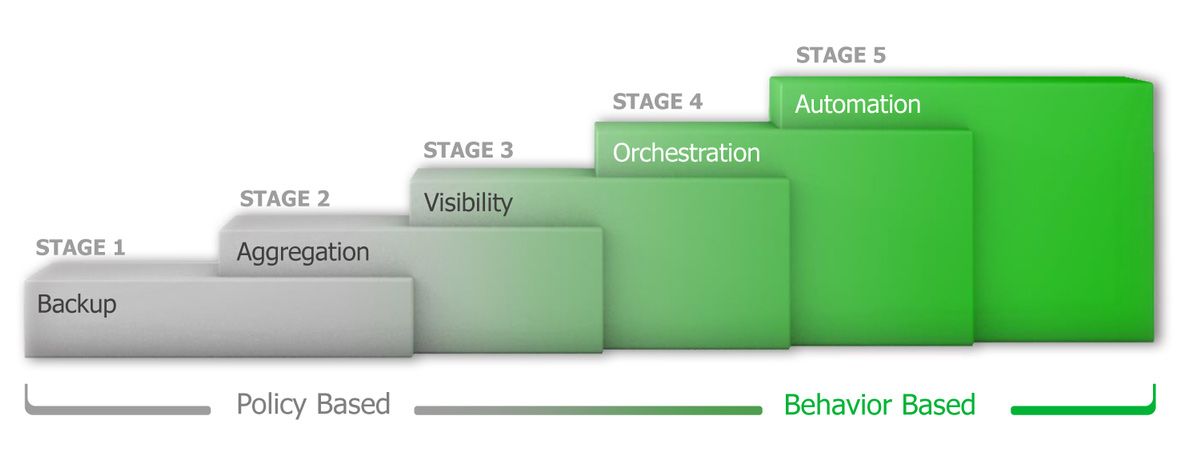- Stage One: Backup
- Stage Two: Aggregation
- Stage Three: Visibility
- Stage Four: Orchestration
- Stage Five: Automation
Back up all workloads and ensure they are always recoverable in the event of outages, attack, loss, or theft.
Provide for the security of data from a systemic perspective; secure, back up, and recover your data wherever it is so it can always be protected against outages, attack, loss, or theft. This stage is about making sure you can get your data back if it is lost or compromised, and that your business can survive; however, there are minimal data insights at this stage, and data is often stored in individual silos.
Veeam helps businesses on their journey through the Five Stages of Intelligent Data Management by ensuring data is always protected, in compliance and available when needed with Veeam Hyper-Availability Platform, the most complete enterprise platform to help customers become Hyper-Available Enterprises.
Ensure protection and availability of data across multi-cloud environments to drive digital services and ensure an aggregated view of service level compliance.
Aggregate data protection for physical, virtual, and cloud workloads so that you have central management across various data locations, enabling multi-cloud use cases. This stage allows instant access to any data, any app, anywhere to drive recovery, analytics, application development, and uninterrupted digital services; the ability to extract full value from your data is just beginning at this point.
Improve management of data across multi-cloud environments with clear, unified visibility and control into usage, performance issues, and operations.
Gain full operational insight into data along with the ability to glean business insights from data to drive better business decisions and outcomes. This stage provides a “single pane of glass” so that a full view of one’s environment allows data management to evolve from a reactive measure, focused on remediating issues that have already occurred, to a proactive measure, preventing any loss in data availability through advanced monitoring, resource optimization, capacity planning, and built-in intelligence. The ability to leverage the value of data is much greater in this stage; however, it is still inefficient and largely dependent on manual processes.
Seamlessly move data to the best location across multi-cloud environments to ensure business continuity, compliance, security, and optimal use of resources for business operations.
Ensure that enterprise data is always on the right infrastructure, always protected, always ready to do work. This stage delivers orchestration capabilities so that workloads can move more easily from one infrastructure to another, providing business continuity and resource optimization via automation informed by policies. Getting from here to the next stage moves us beyond policy-based mechanisms to true automation.
Data becomes self-managing by learning to back itself up, migrate to ideal locations based on business needs, secure itself during anomalous activity, and recover instantaneously.
Data becomes intelligent, location-aware, and self-managing. It learns how to make itself easier to access, back up, recover, and use; how to best interact with and optimize the infrastructure on which it resides and through which it moves to meet its obligations to the business, to security regulators, and to users of the company’s services. And how to react automatically to anomalous behavior in the system. At stage five, you achieve true Intelligent Data Management in your Hyper-Available Enterprise.




